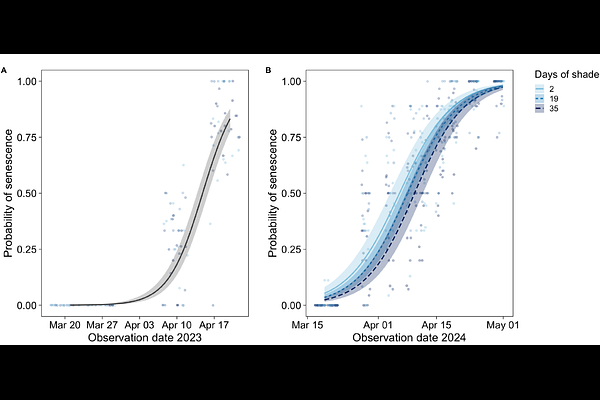Spring ephemeral Erythronium umbilicatum may not be vulnerable to phenological mismatch with overstory trees

Spring ephemeral Erythronium umbilicatum may not be vulnerable to phenological mismatch with overstory trees
Schopler, M.; Simha, A.; Dalton, R. M.; Wilson, E. M.; Redick, E.; Youngsteadt, E.; Petry, W. K.
AbstractPremise: The defining life history strategy of spring ephemeral wildflowers is their avoidance of shading by trees during the brief, high-light period before canopy leaf-out. Studies suggest that spring ephemerals will experience increased light competition because canopy leaf-out is more sensitive to warming than is the phenology of spring ephemerals. However, it remains unclear how longer durations of shade will alter the population dynamics of spring ephemerals and whether all populations are at risk. Methods: We experimentally shaded Erythronium umbilicatum for one to six additional weeks prior to canopy leaf-out to test for immediate and lagged effects of early shading on the timing of senescence and the probability of survival and flowering. To predict the potential for earlier shading, we combined long-term time series of spring air temperature, remotely-sensed tree leaf-out, and E. umbilicatum flowering phenology in North Carolina, USA. Key results: Early shading did not alter E. umbilicatum until the following year, when more-shaded plants senesced later. We found no change in year-to-year survival, and a reduction in the probability of flowering only when plants experienced extremely early shading. Moreover, E. umbilicatum phenology was more sensitive than tree leaf-out to warming temperatures. Under climate warming, we project that E. umbilicatum is unlikely to experience shortened periods of high light. Conclusions: Our findings show that a plant species\' defining life history strategy does not necessarily predict their sensitivity to phenological mismatches. This complicates, but also underscores the importance of identifying the most vulnerable species and directing our research efforts accordingly.